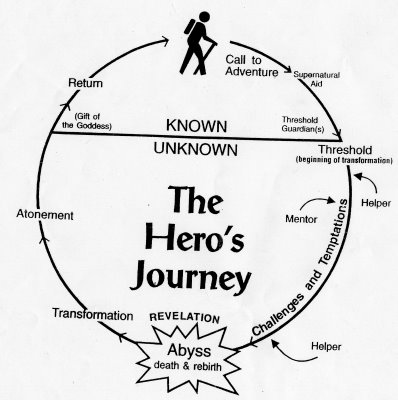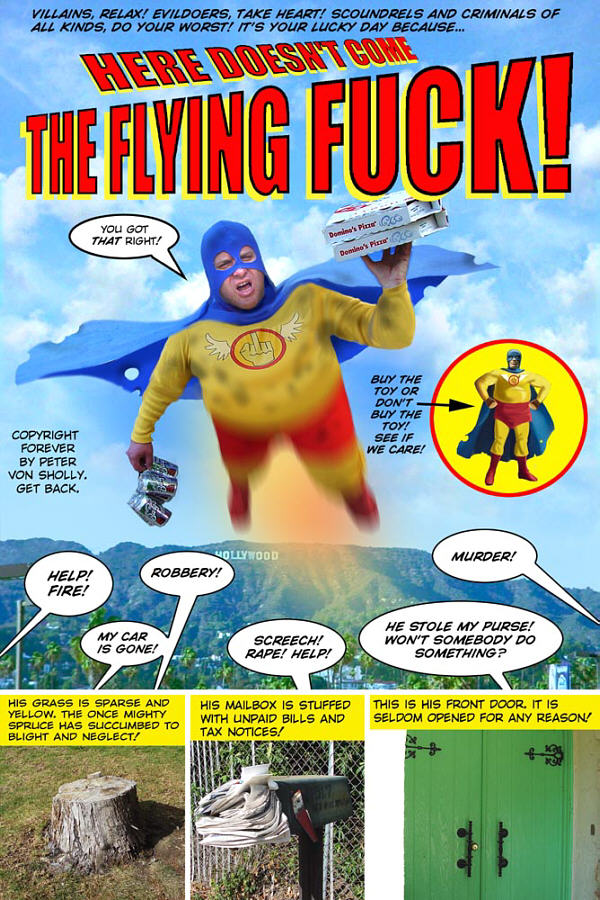Third Bardo: The Period of Re-entry (Sidpa Bardo)
Introduction
If, in the second Bardo, the voyager is incapable of holding on to the knowledge that the peaceful and wrathful visions were projections of his own mind, but became attracted to or frightened by one or more of them, he will enter the Third Bardo. In this period he struggles to regain routine reality and his ego; the Tibetans call it the Bardo of "seeking rebirth." It is the period in which the consciousness makes the transition from transcendent reality to the reality of ordinary waking life. The teachings of this manual are of the utmost importance if one wishes to make a peaceful and enlightened re-entry and avoid a violent or unpleasant one.In the original Bardo Thodol the aim of the teachings is "liberation," i.e., release from the cycle of birth and death. Interpreted esoterically, this means that the aim is to remain at the stage of perfect illumination and not to return to social game reality.
Only persons of extremely advanced spiritual development are able to accomplish this, by exercising the Transference Principle at the moment of ego-death. For average persons who undertake a psychedelic voyage, the return to game reality is inevitable.
Such persons can and should use this part of the manual for the following purposes:
- to free themselves from Third Bardo traps;
- to prolong the session, thus assuring a maximum degree of illumination;
- to select a favorable re-entry, i.e., to return to a wiser and more peaceful post-session personality.
The types of re-entry made can profoundly color the person's subsequent attitudes and feelings about himself and the world, for weeks or even months afterwards. A session which has been predominantly negative and fearful can still be turned to great advantage and much can be learned from it, provided the re-entry is positive and highly conscious. Conversely, a happy and revelatory experience can be made valueless by a fearful or negative re-entry.
The key instructions of the Third Bardo are: (1) do nothing, stay calm, passive and relaxed, no matter what happens; and (2) recognize where you are. If you do not recognize you will be driven by fear to make a premature and unfavorable re-entry. Only by recognizing can you maintain that state of calm, passive concentration necessary for a favorable re-entry. That is why so many recognition-points are given. If you fail on one, it is always possible, up to the very end, to succeed on another. Hence these teachings should be read carefully and remembered well.
In the following sections some of the characteristic Third Bardo experiences are described. In Part IV instructions are given appropriate to each section. At this stage in a psychedelic session the voyager is usually capable of telling the guide verbally what he is experiencing, so that the appropriate sections can be read. A wise guide can often sense the precise nature of the ego's struggle without words. The voyager will usually not experience all of these states, but only one or some of them; or sometimes the return to reality can take completely new and unusual turns. In such a case the general instructions for the Third Bardo should be emphasized Third Bardo: Preliminary Instructions.
I. General Description of the Third Bardo
Normally, the person descends, step by step, into lower (more constricted) states of consciousness. Each step downwards may be preceded by a swooning into unconsciousness. Occasionally the descent may be sudden, and the person will find himself jolted back to a vision of reality which by contrast with the preceding phases seems dull, static, hard, angular, ugly and puppet-like. Such changes can induce fear and horror and he may struggle desperately to regain familiar reality. He may get trapped into irrational or even bestial perspectives which then dominate his entire consciousness. These narrow primitive elements stem from aspects of his personal history which are usually repressed. The more enlightened consciousness of the first two Bardos and the civilized elements of ordinary waking life are shelved in favor of powerful, obsessive primitive impulses, which in fact are merely faded and incoherent instinctual parts of the voyager's total personality. The suggestibility of Bardo consciousness makes them seem all-powerful and overwhelming.On the other hand, the voyager may also feel that he possesses supernormal powers of perception and movement, that he can perform miracles, extraordinary feats of bodily control etc. The Tibetan book definitely attributes paranormal faculties to the consciousness of the Bardo voyager and explains it as due to the fact that the Bardo-consciousness encompasses future elements as well as past. Hence clairvoyance, telepathy, ESP, etc. are said to be possible. Objective evidence does not indicate whether this sense of increased perceptiveness is real or illusory. We therefore leave this as an open question, to be decided by empirical evidence.
This then is the first recognition point of the Third Bardo. The feeling of supernormal perception and performance. Assuming that it is valid, the manual warns the voyager not to be fascinated by his heightened powers, and not to exercise them. In yogic practice, the most advanced of the lamas teach the disciple not to strive after psychic powers of this nature for their own sake; for until the disciple is morally fit to use them wisely, they become a serious impediment to his higher spiritual development. Not until the selfish, game-involved nature of man is completely mastered is he safe in using them.
A second sign of Third Bardo existence are experiences of panic, torture and persecution. They are distinguished from the wrathful visions fo the Second Bardo in that they definitely seem to involve the person's own "skin-encapsulated ego." Mind-controlling manipulative figures and demons of hideous aspects may be hallucinated. The form that these torturing demons take will depend on the person's cultural background. Where Tibetans saw demons and beasts of prey, a Westerner may see impersonal machinery grinding, or depersonalizing and controlling devices of different futuristic varieties. Visions of world destruction, dying in space-fiction modes, and hallucinations of being engulfed by destructive powers will likewise come; and sounds of the mind-controlling apparatus, of the "combine's fog machinery," of the gears which move the scenery of the puppet show, of angry overflowing seas, and of the roaring fire and of fierce winds springing up, and of mocking laughter.
When these sounds and visions come, the first impulse will be to flee from them in panic and terror, not caring where one goes, so long as one goes out. In psychedelic drug experiences, the person may at this time plead or demand to be brought "out of it" through antidotes and tranquillizers. The person may see himself as about to fall down deep, terrifying precipices. These symbolize the so-called evil passions which, like narcotic drugs, enslave and bind mankind to existence in game-networks (sangsara): anger, lust, stupidity, pride or egoism, jealousy, and control-power. Such experiences, just as the previous one of enhanced power, should be regarded as recognizing features of the Third Bardo. One should neither flee the pain nor pursue the pleasure.
Recognition is all that is necessary - and recognition depends upon preparation.
A third sign is a kind of restless, unhappy wandering which may be purely mental or may involve actual physical movement. The person feels as if driven by winds (winds of karma) or shunted around mechanically. There may be brief respites at certain places or scenes in the "ordinary" human world. Like a person travelling alone at night along a highway, having his attention arrested by prominent landmarks, great isolated trees, houses, bridgeheads, temples, hot-dog stands, etc., the person in the re-entry period has similar experiences. He may demand to return to familiar haunts in the human world. But any such external placation is temporary and soon the restless wandering will recommence.
There may come a desperate desire to phone or otherwise contact your family, your doctor, your friends and appeal to them to pull you out of the state. This desire should be resisted. The guide and the fellow voyagers can be of best assistance. One should not try to involve others in one's hallucinatory world. The attempt will fail anyway since outsiders are usually unable to understand what is happening. Again, merely to recognize these desires as Third Bardo manifestations is already the first step toward liberation.
A fourth, rather common experience is the following: the person may feel stupid and full of incoherent thoughts, whereas everyone else seems to be perfectly knowing and wise. This leads to feelings of guilt and inadequacy and in extreme from to the Judgment Vision, to be described below. This feeling of stupidity is merely the natural result of the limited perspective under which the consciousness is operating in this Bardo.
Calm, relaxed acceptance and trust will enable the voyager to win liberation at this poin.
Another experience, the fifth recognizing feature, which is especially impressive when it occurs suddenly, is the feeling of being dead, cut off from surrounding life, and full of misery. The person may with a jolt awake from some trance-like swoon and experience himself and the others as lifeless robots, performing wooden meaningless gestures. He may feel that he will never come back and will lament his miserable state.
Again, such fantasies are to be recognized as the attempts of the ego to regain control. In the true state of ego-death, as it occurs in the First or Second Bardos, such complaints are never uttered.
Sixth, one may have the feeling of being oppressed or crushed or squeezed into cracks and crevices amidst rocks and boulders. Or the person may feel that a kind of metallic net or cage may encompass him. This symbolizes the attempt prematurely to enter an ego-robot which is unfitting or unequipped to deal with the expanded consciousness. Therefore one should relax the panicky desire to regain an ego.
A Seventh aspect is a kind of grey twilight-like light suffusing everything, which is in marked contrast to the brilliantly radiating lights and colors of the earlier stages of the voyage. Objects, instead of shining, glowing and vibrating, are now dully colored, shabby and angular.
The passages Third Bardo: Preliminary Instructions contain general instructions for the Third Bardo state and its recognizable features. Any or all of the passages may be read when the guide senses that the voyager is beginning to return to the ego.
II. Re-entry Visions
In the preceding section the symptoms of re-entry were described, the signs that the voyager is tryihng to regain his ego. In this section are described visions of the types of re-entry one can make.The Tibetan manual conceives of the voyager as returning eventually to one of six worlds of game existence (sangsara). That is, the re-entry to the ego can take place on one of six levels, or as one of six personality types. Two of these are higher than the normal human, three are lower. The highest, most illuminated, level is that of the devas, who are what Westerners would call saints, sages or divine teachers. They are the most enlightened people walking the earth. Gautama Buddha, Lao Tse, Christ. The second level is that of the asuras, who may be called titans or heroes, people with a more than human degree of power and vision. The third level is that of most normal human beings, struggling through game-networks, occasionally breaking free. The fourth level is that of primitive and animalistic incarnations. In this category we have the dog and the cock, symbolic of hyper-sexuality concomitant with jealousy; the pig, symbolizing lustful stupidity and uncleanliness; the industrious, hoarding ant; the insect or worm signifying an earthy or grovelling disposition; the snake, flashing in anger; the ape, full of rampaging primitive power; the snarling "wolf of the steppes;" the bird, soaring freely. Many more could be enumerated. In all cultures of the world people have adopted identities in the image of animals. In childhood and in dreams it is a process familiar to all. The fifth level is that of neurotics, frustrated lifeless spirits forever pursuing unsatisfied desires; the sixth and lowest level is hell or psychosis. Less than one percent of ego- transcendent experiences end in sainthood or psychosis. Most persons return to the normal human level.
According to The Tibetan Book of the Dead, each of the six game worlds or levels of existence is associated with a characteristic sort of thralldom, from which non-game experiences give temporary freedom: (1) existence as a deva, or saint, although more desirable than the others, is concomitant with an ever-recurring round of pleasure, free game ecstasy; (2) existence as an asura, or titan, is concomitant with incessant heroic warfare; (3) helplessness and slavery are characteristic of animal existence; (4) torments of unsatisfied needs and wants are characteristic of the existence of pretas, or unhappy spirits; (5) the characteristic impediments of human existence are inertia, smug ignorance, physical or psychological handicaps or various sorts.
According to the Bardo Thodol, the level one is detined for is determined by one's karma. During the period of the Third Bardo premonitory signs and visions of the different levels appear, that for which one is heading appearing most clearly. For example, the voyager may feel full of godlike power (asuras), or he may feel himself stirred by primitive or bestial impulses, or he may experience that all-pervasive frustration of the unhappy neurotics, or shudder at the tortures of a self-created hell.
The chances of making a favorable re-entry are increased if the process is allowed to take its own natural course, without effort or struggle. One should avoid pursuing or fleeing any of the visions, but meditate calmly on the knowledge that all levels exist in the Buddha also.
One can recognize and examine the signs as they appear and learn a great deal about oneself in a very short time. Although it is unwise to struggle against or flee the visions that come in this period, the Instructions for Re-entry Visions are designed to help the voyager regain First Bardo transcendence. In this way, if the person finds himself about to return to a personality or ego which he finds inappropriate to his new knowledge about himself, he can, by following the instructions, prevent this and make a fresh re-entry.
III. The All-Determining Influence of Thought
Liberation may be obtained, by such confrontation, even though previously it was not. If, however, liberation is not obtained even after these confrontations, further earnest and continued application is essential.Should you feel attachment to material possessions, to old games and activities, or if you get any because other people are still involved in pursuits that you have renounced, this will affect the psychological balance in such a way that even if destined to return at a higher level, you will actually re-enter on a lower level in the world of unsatisfied spirits (neurosis). On the other hand, even if you do feel attached to worldly games that you have renounced, you will not be able to play them, and they will be of no use to you. Therefore abandon weakness and attachment to them; cast them away wholly; renounce them from your heart. No matter who may be enjoying your possessions, or taking your role, have no feelings of miserliness or jealousy, but be prepared to renounce them willingly. Think that you are offering them to your internal freedom and to your expaned consciousness. Abide in the feeling of non-attachment, devoid of weakness and craving.
Again, when the activities of the other members of the session are wrong, careless, inattentive or distracting, when the agreement or contract is broken, and when purity of intention is lost by any participant, and frivolity and laxness take over (all of which can clearly be seen by the Bardo voyager) you may feel lack of faith and begin to doubt your beliefs. You will be able to perceive any anxiety or fear, any selfish actions, ego-centric conduct and manipulative behavior. You may think: "Alas! they are playing me false, they have cheated and deceived." If you think thus, you will become extremely depressed, and through great resentment you will acquire disbelief and loss of faith, instead of affection and humble trust. Since this affects the psychological balance, re-entry will certainly be made on an unpleasant level.
Such thinking will not only be of no use, but it will do great harm. However improper the behavior of other, think thus: "What? How can the words of a Buddha be inappropriate? It is like the reflection of blemishes on my own face which I see in a mirror; my own thoughts must be impure. As for these others, they are noble in body, holy in speech, and the Buddha is within them: their actions are lessons for me."
Thus thinking, put your trust in your companions and exercise sincere love towards them. Then whatever they do will be to your benefit. The exercise of that love is very important; do not forget this!
Again, even if you were destined to return to a lower level and are already going into that existence, yet through the good deeds of friends, relatives, participants, learned teachers who devote themselves wholeheartedly to the correct performance of beneficent rituals, the delight from your feeling greatly cheered at seeing them will, by its own virtue, so affect the psychological balance that even though heading downwards, you may yet rise to a higher and happier level. Therefore you should not create selfish thoughts, but exercise pure affection and humble faith towards all, impartially. This is highly important. Hence be extremely careful.
The Instructions for the All-Determing Influence of Thought are useful in any phase of the Third Bardo, but particularly if the voyager is reacting with suspicion or resentment to other members of the group, or to his own friends and relatives.
IV. Judgment Visions
The judgment vision may come: the Third Bardo blame game. "Your good genius will count up your good deeds with white pebbles, the evil genius the evil deeds with black pebbles." A judgment scene is a central part of many religious systems, and the vision can assume various forms. Westerners are most likely to see it in the well-known Christian version. The Tibetans give a psychological interpretation to this as to all the other visions. The Judge, or Lord of Death, symbolizes conscience itself in its stern aspect of impartiality and love of righteousness. The "Mirror of Karma" (the Christian Judgment Book), consulted by the Judge, is memory. Different parts of the ego will come forward, some offering lame excuses to meet accusations, others ascribing baser motives to various deeds, counting apparently neutral deeds among the black ones; still others offering justifications or requests for pardon. The mirror of memory reflects clearly; lying and subterfuge will be of no avail. Be not frightened, tell no lies, face truch fearlessly.No you may imagine yourself surrounded by figures who wish to torment, torture or ridicule you (the "Executive Furies of the Robot Lord of Death"). These merciless figures may be internal or they may involve the people around you, seen as pitiless, mocking, superior. Remember that fear and guilt and persecuting, mocking figures are your own hallucinations. Your own guilt machine. Your personality is a collection of thought-patterns and void. It cannot be harmed or injured. "Swords cannot pierce it, fire cannot burn it." Free yourself from your own hallucinations. In reality there is no such thing as the Lord of Death, or a justice-dispensing god or demon or spirit. Act so as to recognize this.
Recognize that you are in the Third Bardo. Meditate upon your ideal symbol. If you do not know how to meditate, then merely analyze with great care the real nature of that which is frightening you: "Reality" is nothing but a voidness (Dharma-Kaya). That voidness is not of the voidness of nothingness, but a voidness at the true nature of which you feel awed, and before which your consciousness shines more clearly and lucidly. [That is the state of mind known as "Sambhoga-Kaya." In that state, you experience, with unbearable intensity, Voidness and Brightness inseparable - the Voidness bright by nature and the Brightness inseparable from the Voidness - a state of the primordial or unmodified consciousness, which is the Adi-Kaya. And the power of this, shining unobstructedly, will radiate everywhere; it is the Nirmana-Kaya.
These refer to the fundamental Wisdom Teachings of the Bardo Thodol. In all Tibetan systems of yoga, realization of the Voidness is the one great aim. To realize it is to attain the unconditioned Dharma-Kaya, or "Divine Body of Truth," the primordial state of uncreatedness, of the supra-mundane All-Consciousness. The Dharma-Kaya is the highest of the three bodies of the Buddha and of all Buddhas and beings who have perfect enlightenment. The other two bodies are the Sambhoga-Kaya or "Divine Body of Perfect Endowment" and the Nirmana-Kaya or "Divine Body of Incarnation." Adi-Kaya is synonymous with Dharma-Kaya. The Dharma-Kaya is primordial, formless Essential Wisdom; it is true experience freed from all error or inherent or accidental obscuration. It includes both Nirvana and Sangsara, which are polar states of consciousness, but in the realm of pure consciousness identical. The Sambhoga-Kaya embodies, as in the five Dhyani Buddhas, Reflected or Modified Wisdom; and the Nirmana-Kaya embodies, as in the Human Buddhas, Practical or Incarnate Widom. All enlightened beings who are reborn in this or any other world with full consciousness, as workers for the betterment of their fellow creatures, are said to be Nirmana-Kaya incarnates. Lama Kazi Dawa-Samdup, the translator of the Bardo Thodol, held that the Adi-Buddha, and all deities associated with the Dharma-Kaya, are not to be regarded as personal deities, but as personifications of primordial and universal forces, laws or spiritual influences. "In the boundless panorama of the existing and visible universe, whatever shapes appear, whatever sounds vibrate, whatever radiances illuminate, or whatever consciousnesses cognize, all are the play of manifestation in the Tri-Kaya, the Three-fold Principle of the Cause of All Causes, the Primordial Trinity. Impenetrating all, is the All-Pervading Essence of Spirit, which is Mind. It is uncreated, impersonal, self-existing, immaterial and indestructible." The Tri-Kaya is the esoteric trinity and corresponds to the exoteric trinity of Buddha, the Scriptures and the Priesthood (or your own divinity, this manual and your companions).
If the voyager is struggling with guilt and penance hallucinations, the Instructions for Judgment Visions may be read.
V. Sexual Visions
Sexual visions are extremely frequent during the Third Bardo. You may see or imagine males and females copulating. [According to Jung. ("Psychological Commentary" to The Tibetan Book of the Dead, Evans-Wentz edition, p. xiii), "Freud's theory is the first attempt made in the West to investigate, as if from below, from the animal sphere of instinct the psychic territory that corresponds in Tantric Lamaism to the Sidpa Bardo." The vision described here, in which the person sees mother and father in sexual intercourse, corresponds to the "primal scene" in psychoanalysis. At this level, then, we begin to see a remarkable convergence of Eastern and Western psychology. Note also the exact correspondence to the psychoanalytic theory of the Oedipus Complex.] This vision may be internal or it may involve the people around you. You may hallucinate multi-person orgies and experience both desire and shame, attraction and disgust. You may wonder what sexual performance is expected of you and have doubts about your ability to perform at this time.When these visons occur, remember to withhod yourself from action or attachment. Have faith and float gently with the stream. Trust in the unity of life and in your companions.
If you attempt to enter into your old ego because you are attracted or repulsed, if you try to join or excape from the orgy you are hallucinating, you will re-enter on an animal or neurotic level. If you become conscious of "malness," hatred of the father together with jealousy and attraction towards the mother will be experienced; if you become conscious of "femaleness," hatred of the mother together with attraction and fondness for the father is experienced.
It is perhaps needless to say that this kind of self-centered sexuality has little in common with the sexuality of transpersonal experiences. Physical union can be one expression or manifestation of cosmic union.
Visions of sexual union may sometimes be followed by visions of conception - you may actually visualize the sperm uniting with the ovum - , of intra-uterine life and birth through the womb. Some people claim to have re-lived their own physical birth in psychedelic sessions and occasionally confirming evidence for such claims has been put forward. Whether this is so or not may be left as a question to be decided by empirical evidence. Sometimes the birth visions will be clearly symbolic - e.g., emergence from a cocoon, breaking out of a shell, etc.
Whether the birth vision is constructed from memory or fantasy, the psychedelic voyager should try to recognize the signs indicating the type of personality that is being reborn.
The Instructions for Sexual Visions may be read to the voyager who is struggling with sexual hallucinations.
VI. Methods for Preventing the Re-Entry
Although many confrontations and recognition points have been given, the person may be ill-prepared and still be wandering back to game reality. It is of advantage to postpone the return for as long as possible, thus maximizing the degree of enlightenment in the subsequent personality. For this reason four meditative methods are given for prolonging the ego-loss state. They are (1) meditation on the Buddha or guide; (2) concentration on good games; (3) meditation on illusion; and (4) meditation on the void. See the Four Methods of Preventing Re-entry. Each one attempts to lead the voyager back to the First Bardo central stream of energy from which he has been separated by game involvements. One may ask how these meditative methods, which seem difficult for the ordinary person, can be effective. The answer given in the Tibetan Bardo Thodol is that due to the increased suggestibility and openness of the mind in the psychedelic state these methods can be used by anyone, regardless of intellectual capacity, or proficiency in meditation.VII. Methods of Choosing the Post-Session Personality
Choosing the post-session ego is an extremely profound art and should not be undertaken carelessly or hastily. One should not return fleeing from hallucinated tormentors. Such re-entry will tend to bring the person to one of the three lower levels. One should first banish the fear by visualizing one's protective figure or the Buddha; then choose calmly and impartially.The limited foreknowledge available to the voyager should be used to make a wise choice. In the Tibetan tradition each of the levels of game-existence is associated with a particular color and also certain geographical symbols. These may be different for twentieth-century Westerners. Each person has to learn to decode his own internal road map. The Tibetan indicators may be used as a starting point. The purpose is clear: one should follow the signs of the three higher types and shun those of the three lower. One should follow light and pleasant visions and shun dark and dreary ones.
The world of saints (devas) is said to shine with a white light and to be preceded by visions of delightful temples and jewelled mansions. The world of heroes (asuras) has a green light and is signalled by magical forests and fire images. The ordinary human world has a yellow light. Animal existence is foreshadowed by a blue light and images of caves and deep holes in the earth. The world of neurotics or unsatisfied spirits has a red light and visions of desolate plains and forest wastes. The hell world emits a smoke-colored light and is preceded by sounds of wailing, visions of gloomy lands, black and white houses and black roads along which you have to travel.
Use your foresight to choose a good post-session robot. Do not be attracted to your old ego. Whether you choose to pursue power, or status, or wisdom, or learning, or servitude, or whatever, choose impartially, without being attracted or repelled. Enter into game existence with good grace, voluntarily and freely. Visualize it as a celestial mansion, i.e., as an opportunity to exercise game-ecstasy. Have faith in the protection of the deities and choose. The mood of complete impartiality is important since you may be in error. A game that appears good may later turn out to be bad. Complete impartiality, freedom from want or fear, ensure that a maximally wise choice is made.
As you return you see spread out before you the world, your former life, a planet full of fascinating objects and events. Each aspect of the return trip can be a delightful discovery. Soon you will be descending to take your place in worldly events. The key to this return voyage is simply this: take it easy, slowly, naturally. Enjoy every second. Don't rush. Don't be attached to your old games. Recognize that you are in the re-entry period. Do not return with any emotional pressure. Everything you see and touch can glow with radiance. Each moment can be a joyous discovery.
Here end the Third Bardo, The Period of Re-Entry
I used to religiously (um ha ha) follow the Bardo Thodol so "guessing" that LOST was, originally, the Bardo, was no great stretch. When too many people came too close to guessing the truth, the producers and writers changed direction- which is never a good idea. And so it stumbled on and on to Season 6 and the car crash ending. Wherein it reverted to their poorly understood and poorly executed idea of the Bardo- which is a plurality of purgatories, not one. Which explains the attempt by the writers to keep sticking to the Bardo levels despite all the marketing and merchandising along the way.
What is possibly more interesting is that the different Bardos appealed to the audience to different degrees- reflecting our society's current spiritual level. Which is to say, low.








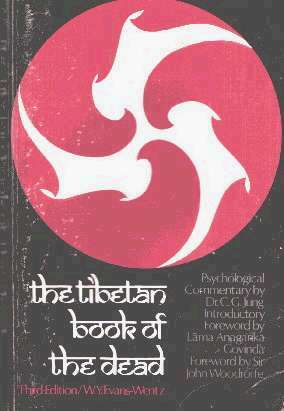


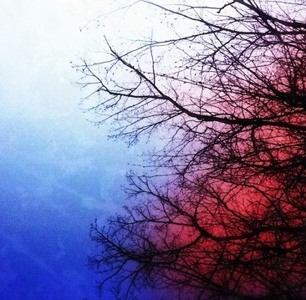








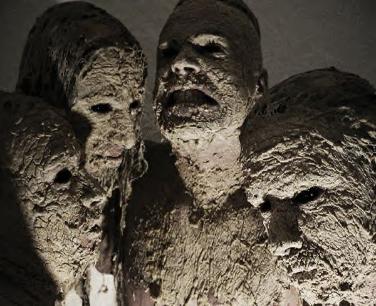
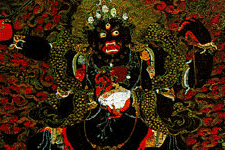


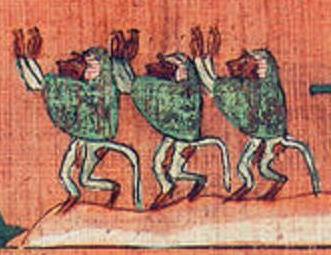





 THE PRISONER is really the sum total of the work and devotion of a magnificent team and they were all towers of strength. David Tomblin, I mean, there couldn't have been a PRISONER without David, Jack Shampan, the art director - what he contributed! He was way ahead of television design. And of course the writers, naturally I'm prejudiced about the writers who played the absolute key role ... people like Tony Skene, Louis Greifer, Gerald Kelsey and others. You know, it's not the McGoohan opera, it really isn't.
THE PRISONER is really the sum total of the work and devotion of a magnificent team and they were all towers of strength. David Tomblin, I mean, there couldn't have been a PRISONER without David, Jack Shampan, the art director - what he contributed! He was way ahead of television design. And of course the writers, naturally I'm prejudiced about the writers who played the absolute key role ... people like Tony Skene, Louis Greifer, Gerald Kelsey and others. You know, it's not the McGoohan opera, it really isn't.
